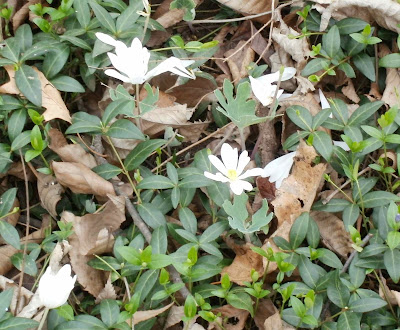Nearly all the bulbs are blooming, even the late-season flowers. High temperatures approached 80°F most of last week. The air smells like sunlight on hyacinths. The crocus and snowdrops are done. Bumblebees are working. Ticks are out. April has staged a coup on March. Chloris and Maia outrace Artemis.
The redbuds showed tiny black knots on their branches last week. Three days before the equinox the buds were dark red. Yesterday morning they were deep purple; by afternoon they were in bloom.
I can’t remember a year when spring arrived so early, so suddenly, so
completely. I remember invoking Flora under cold rain at the equinox two years
ago. We had intended to deck her with flowers, but the best we could manage
were a few crocuses. No matter. This spring she has decked the woods with blossom.
Tomorrow
is the equinox.
 |
| Bloodroot |



